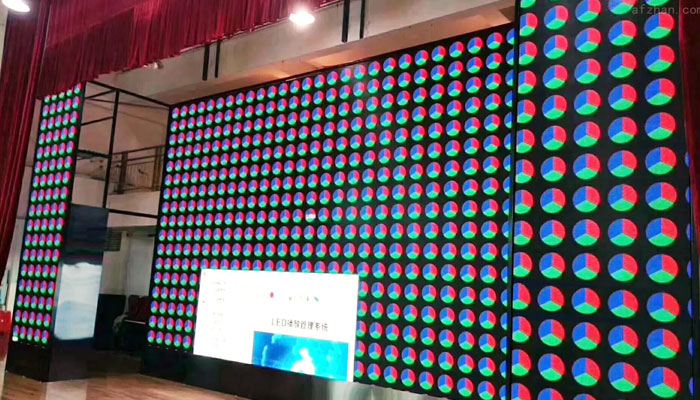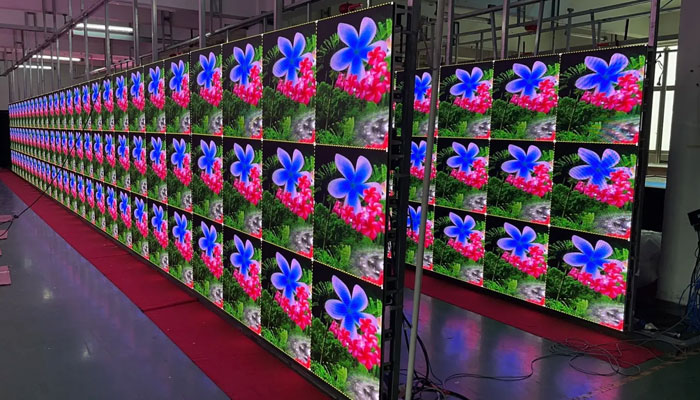In recent years, the film and television industry has experienced rapid growth, with a steady stream of science fiction works gaining widespread popularity among audiences. Among these, “The Mandalorian” stands out as one of the most popular science fiction TV series currently available. The show not only features innovative storytelling and compelling performances by its cast but also boasts stunning and meticulously crafted special effects that leave viewers in awe.
The success of The Mandalorian is largely attributed to a new special effects production tool—LED Wall. Let’s take a closer look at the advantages and role of the Mandalorian LED Wall in the production of The Mandalorian.
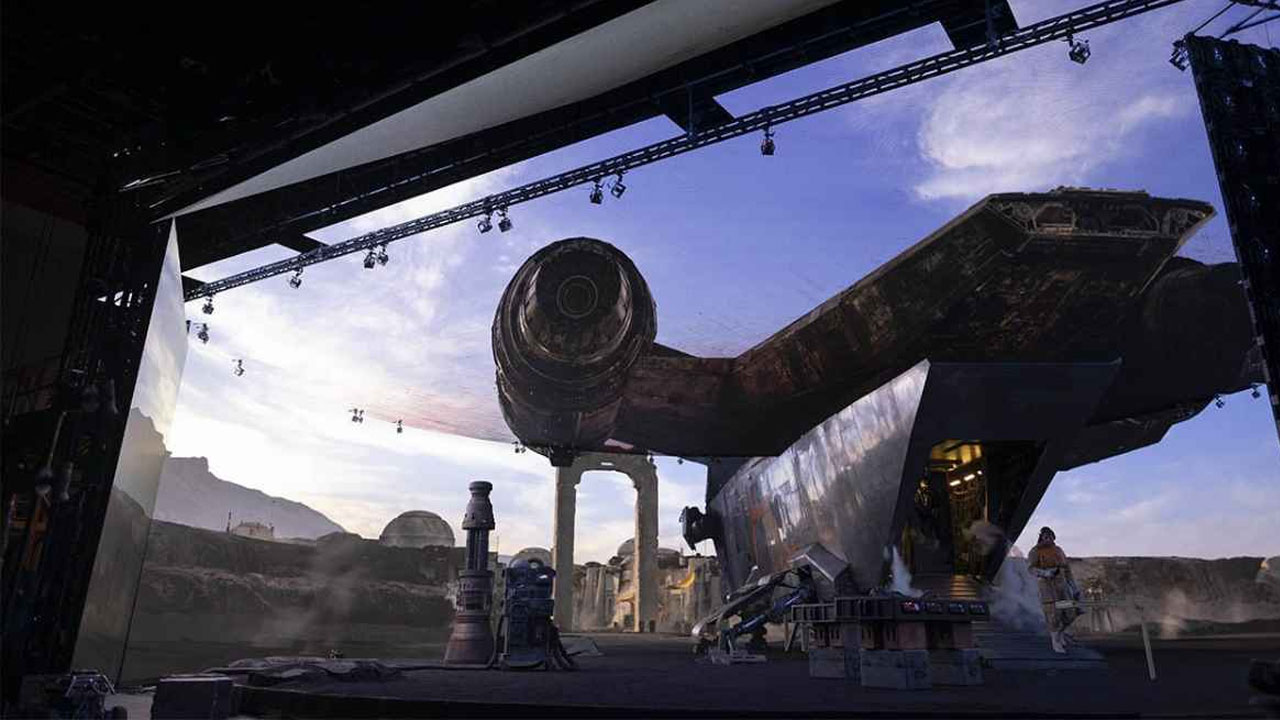
What is the Mandalorian LED Wall?
The Mandalorian LED Wall, a key component of the filming of The Mandalorian, consists primarily of 1,326 individual LED screens, with a wall height of 20 feet and a width of 75 feet. After color and clarity calibration, the screens are seamlessly stitched together to form a curved semicircular display, which is combined with ceiling-mounted LED screens to create a 270-degree ultra-wide viewing angle and high visual clarity Mandalorian LED wall.
Additionally, to facilitate access for filming, two flat screens measuring 18×20 feet are suspended at the entrance, allowing the screens to descend and create a realistic, fully enclosed 360-degree virtual scene.
How the Mandalorian LED Wall Works
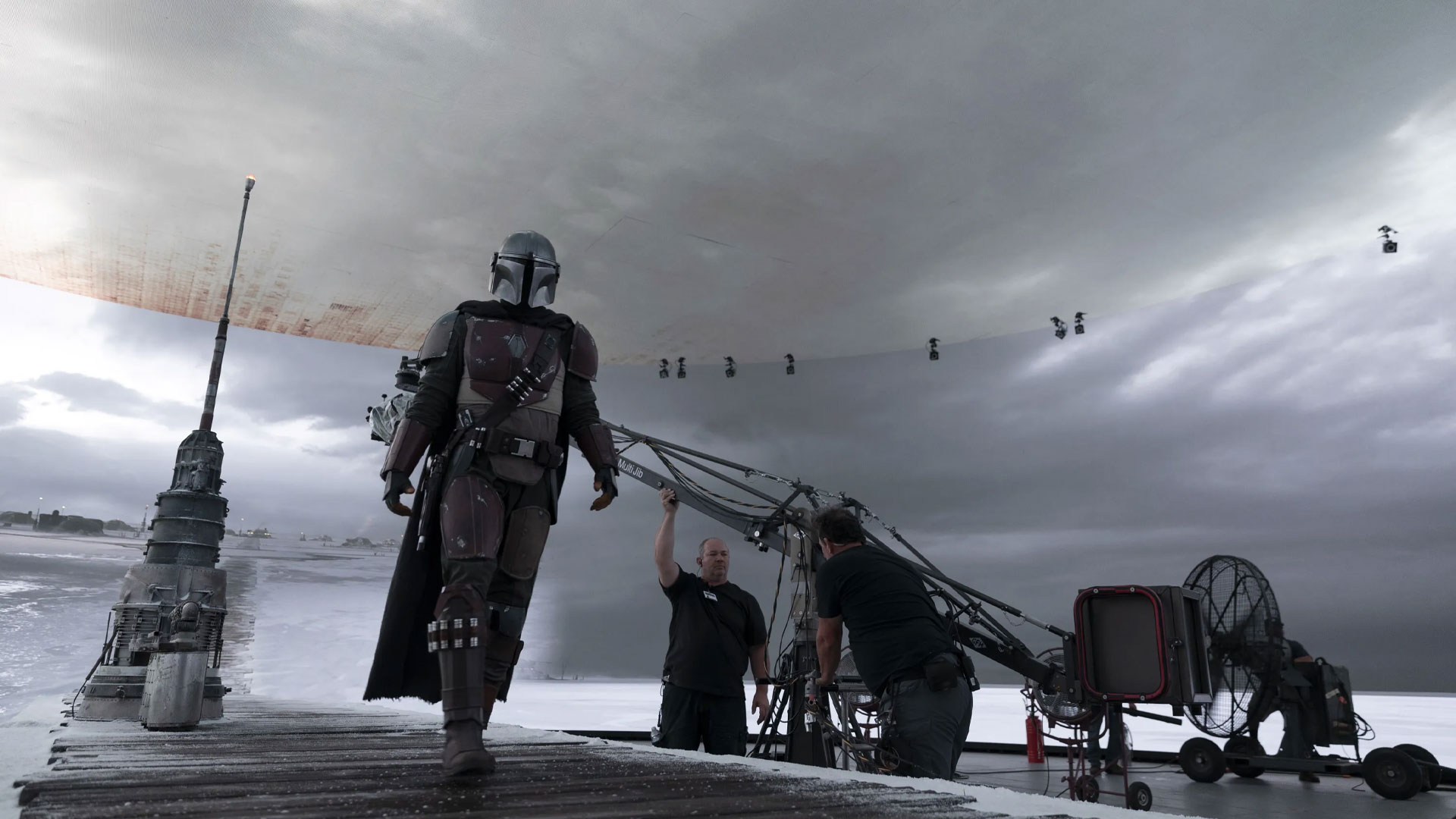
The Mandalorian LED Wall’s ILM StageCraft system employs immersive virtual reality (IVR) integrated technology, enabling production staff to pre-set and switch virtual scenes without being on-site, thereby simplifying virtual filming operations. In simple terms, during filming, technicians project pre-rendered backgrounds onto the LED screens, facilitating directorial filming and actors’ immersive performances.
Advantages of Using the LED Wall for Filming The Mandalorian
Since its release, The Mandalorian has gained widespread acclaim for its realistic visual effects, demonstrating that using an LED wall during filming can deliver exceptional performance and an outstanding viewing experience. The advantages of using an LED wall for filming The Mandalorian are as follows:
Realistic Visual Effects
The Mandalorian LED Wall has a pixel pitch of 2.85 millimeters, enabling the screen to display clearer, more detailed images and greater visual complexity. An ultra-wide 270-degree viewing angle ensures realistic visual effects regardless of the shooting angle.
Additionally, the LED wall’s high refresh rate effectively reduces image blur, providing a smoother, more visually pleasing experience, while also eliminating glare points to deliver an immersive shooting experience.
Streamlined Shooting Process
The LED wall not only streamlined the shooting process and saved time for The Mandalorian, but also accelerated the shooting schedule. Thanks to the LED Wall’s advanced rendering technology for real-time imaging, photographers can directly view the composite effects of virtual backgrounds and people during filming, enabling them to achieve the desired visual effects faster, without waiting for post-production modifications or rework.
Furthermore, the LED Wall can adjust projected images in real time, allowing for swift adjustments to a scene without waiting for the set to be rebuilt or props to be made, thereby reducing the waiting time for photographers and actors.
Production Flexibility
The greatest highlight of the LED Wall is the improvement in production efficiency. The LED Wall can virtually create different scenes, eliminating the need to travel between various filming locations, giving directors and creators greater creative freedom in filming. Furthermore, production staff are not constrained by time or space during filming, allowing for flexible scheduling.
Set Design Diversity
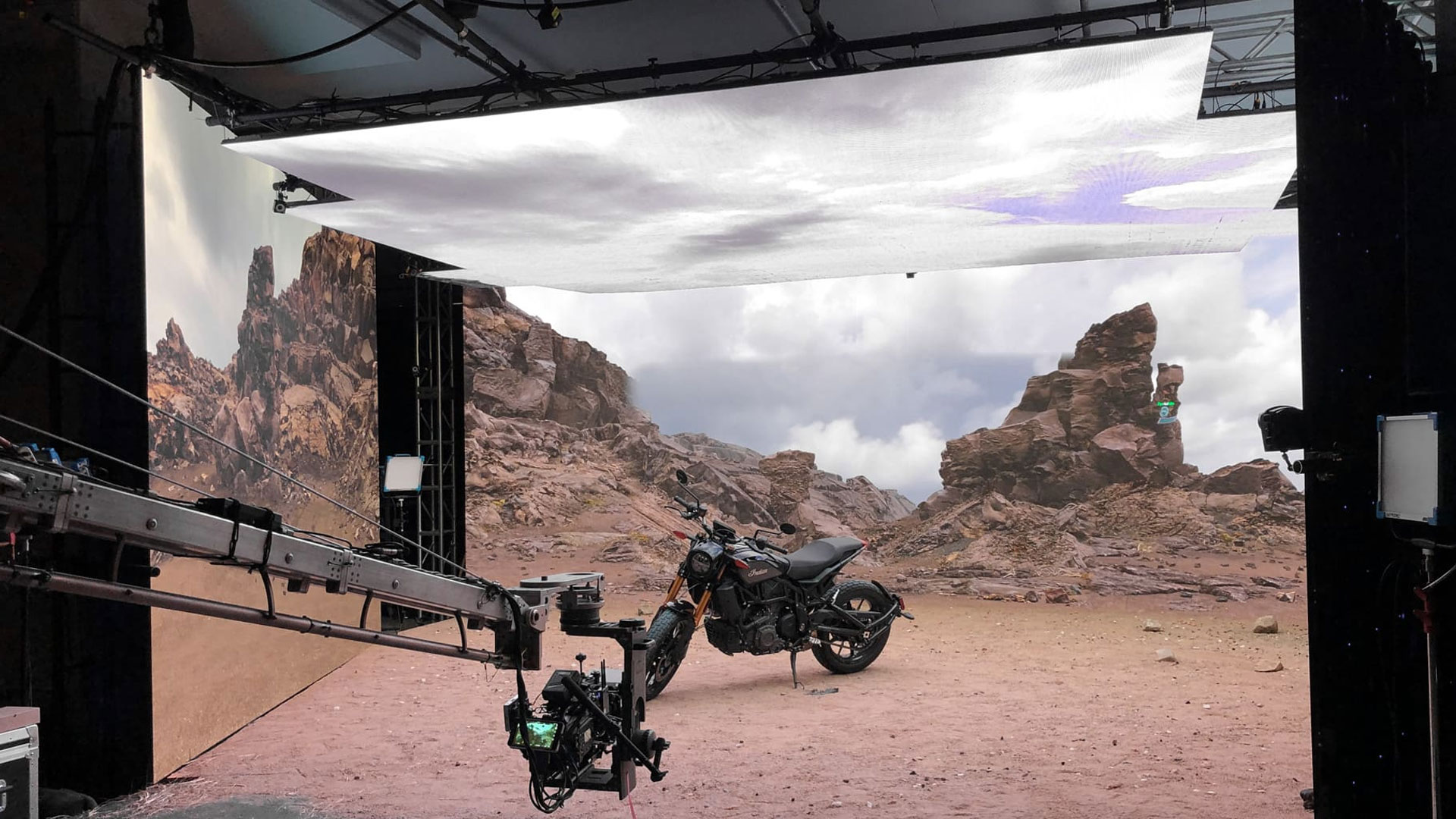
LED walls not only enable realistic shooting environments but also allow for quick adjustments and diverse creations through digital and real-world scenes. For example, they can create complex environments like beaches or mountain tops, or design sci-fi scenes based on the plot.
The diversity of set designs not only provides convenience and creative space for directors and producers but also enhances the visual effects of shows like *The Mandalorian*.
The Role of LED Walls in the TV Series “The Mandalorian”
Now that we have a clear understanding of the Mandalorian LED wall, we will take a closer look at how it plays a crucial role in “The Mandalorian” from multiple perspectives, including immersive experiences, adjustable brightness, and actor immersion.
Immersive Experience
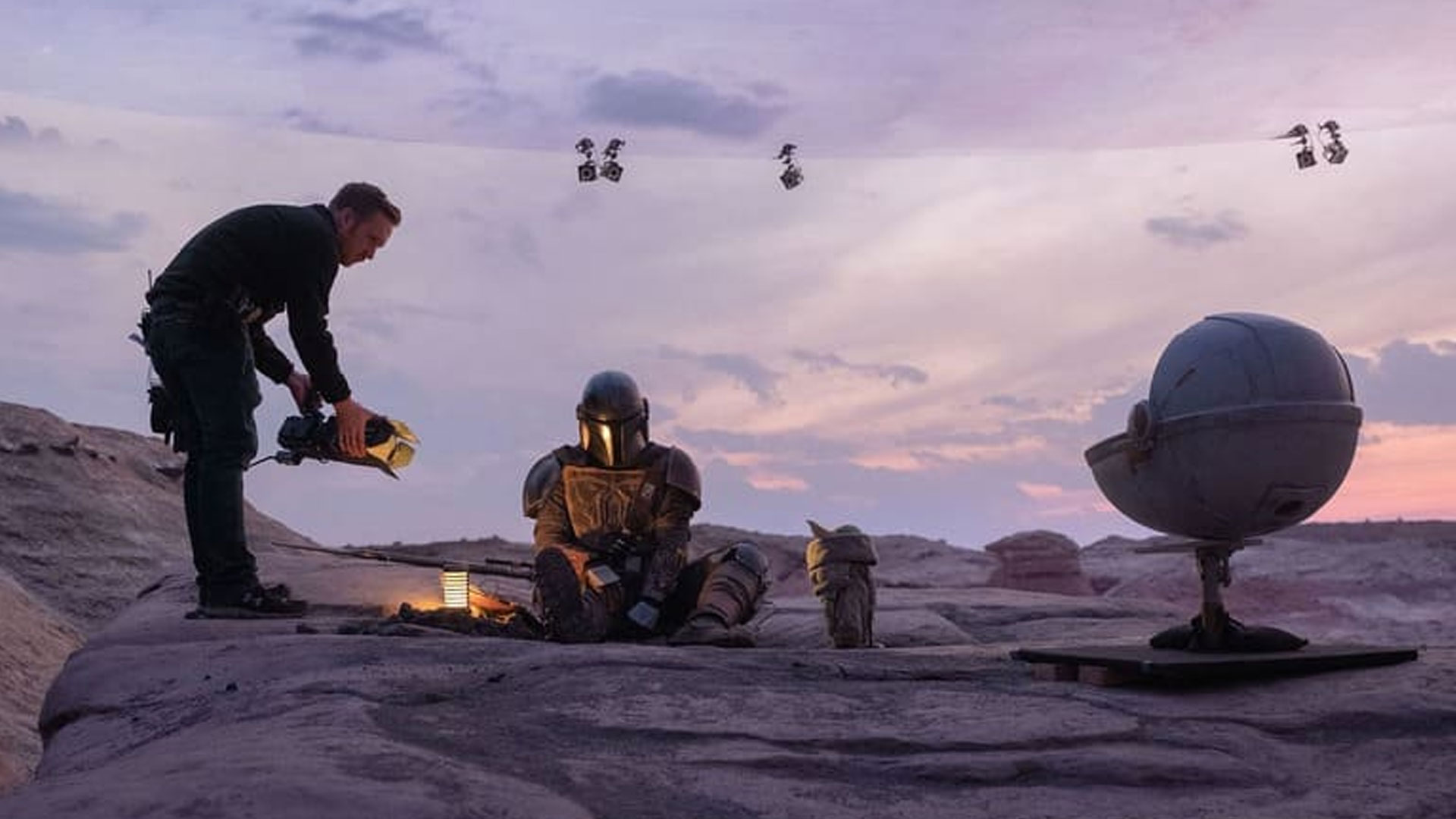
As mentioned earlier, the LED Wall uses high-resolution LED panels. The main filming location is a 270-degree semicircular wall that extends all the way to the ceiling, creating an immersive virtual space. These panels primarily use 8K high-refresh ICs with a high pixel density, enabling them to display complex textures and intricate details.
The virtual backgrounds they produce are virtually indistinguishable from real-world environments. Therefore, the Mandalorian LED Wall not only provides an immersive spatial experience for the Mandalorian filming location but also inspires the creativity and imagination of the show’s directors.
Adjustable Brightness
The Mandalorian LED Wall can adjust its brightness according to the on-site environment and different filming requirements, achieving excellent display effects. For example, when a dimly lit or dark environment is needed during filming, the brightness can be lowered accordingly.
In addition to brightness adjustment, the Mandalorian LED Wall can simulate lighting conditions based on the emitted light, such as daylight, moonlight, twilight, or other light sources. Thus, the LED wall not only meets the lighting requirements of the filming location but also reduces the workload of the Mandalorian production crew to some extent.
Actor immersion
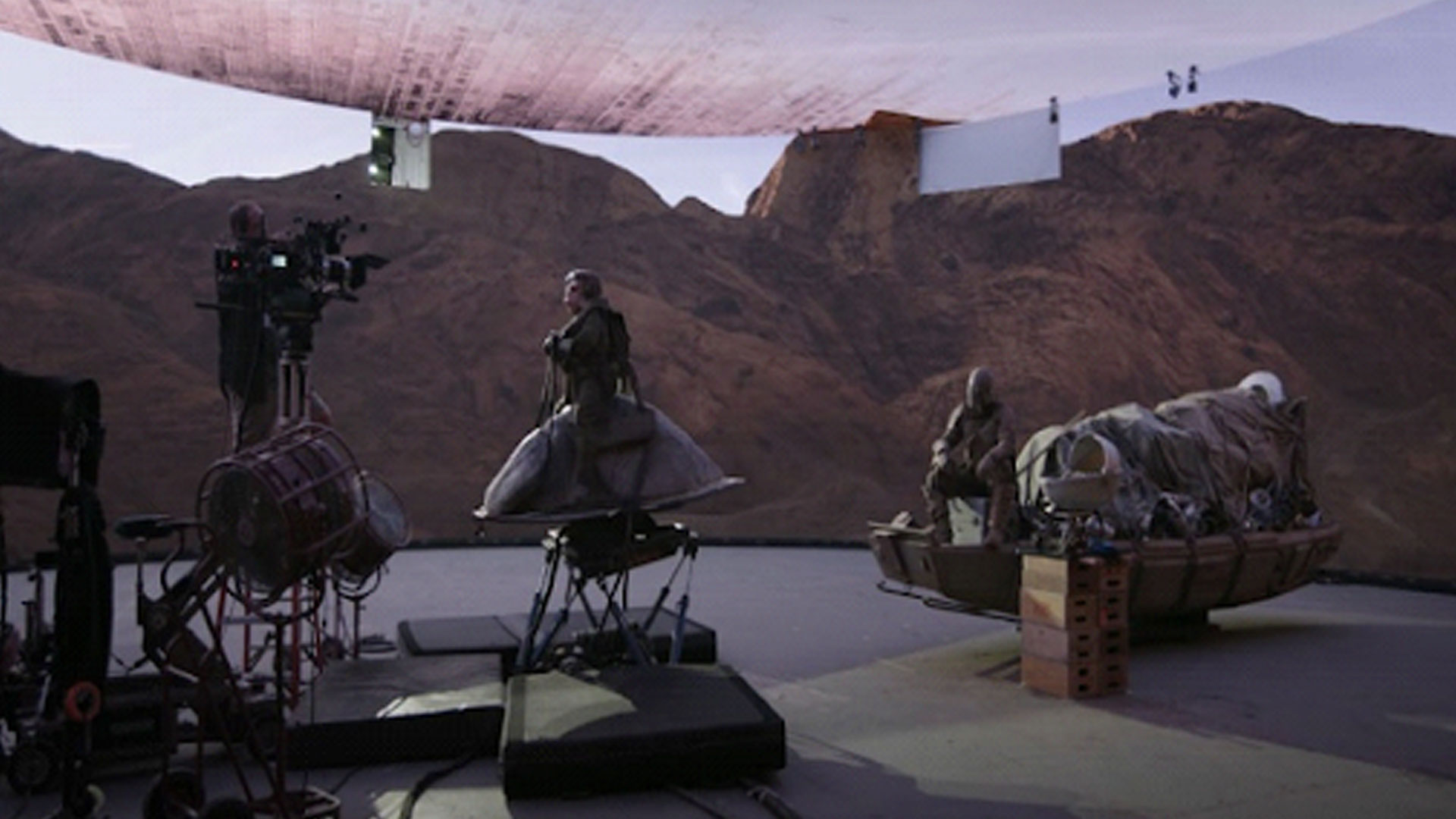
The use of LED walls in The Mandalorian’s filming creates a realistic interactive environment and immersive experience, allowing actors to better immerse themselves in their roles based on the virtual background. This results in more authentic and vivid performances, reducing the need for reshoots. Thus, the LED wall serves as a valuable addition for The Mandalorian’s actors.
Camera Tracking Integration
In the filming of The Mandalorian, the Mandalorian LED Wall incorporates camera tracking technology. This technology combines motion sensors and intelligent algorithms to synchronize camera movements with the content displayed on the LED wall, meaning that the background footage changes in tandem with the camera’s movements.
Maintaining consistent perspectives between the LED wall and the camera helps create a sense of spatial continuity, making scenes appear more realistic and natural, thereby enhancing the immersive experience for both the audience and the actors on set.
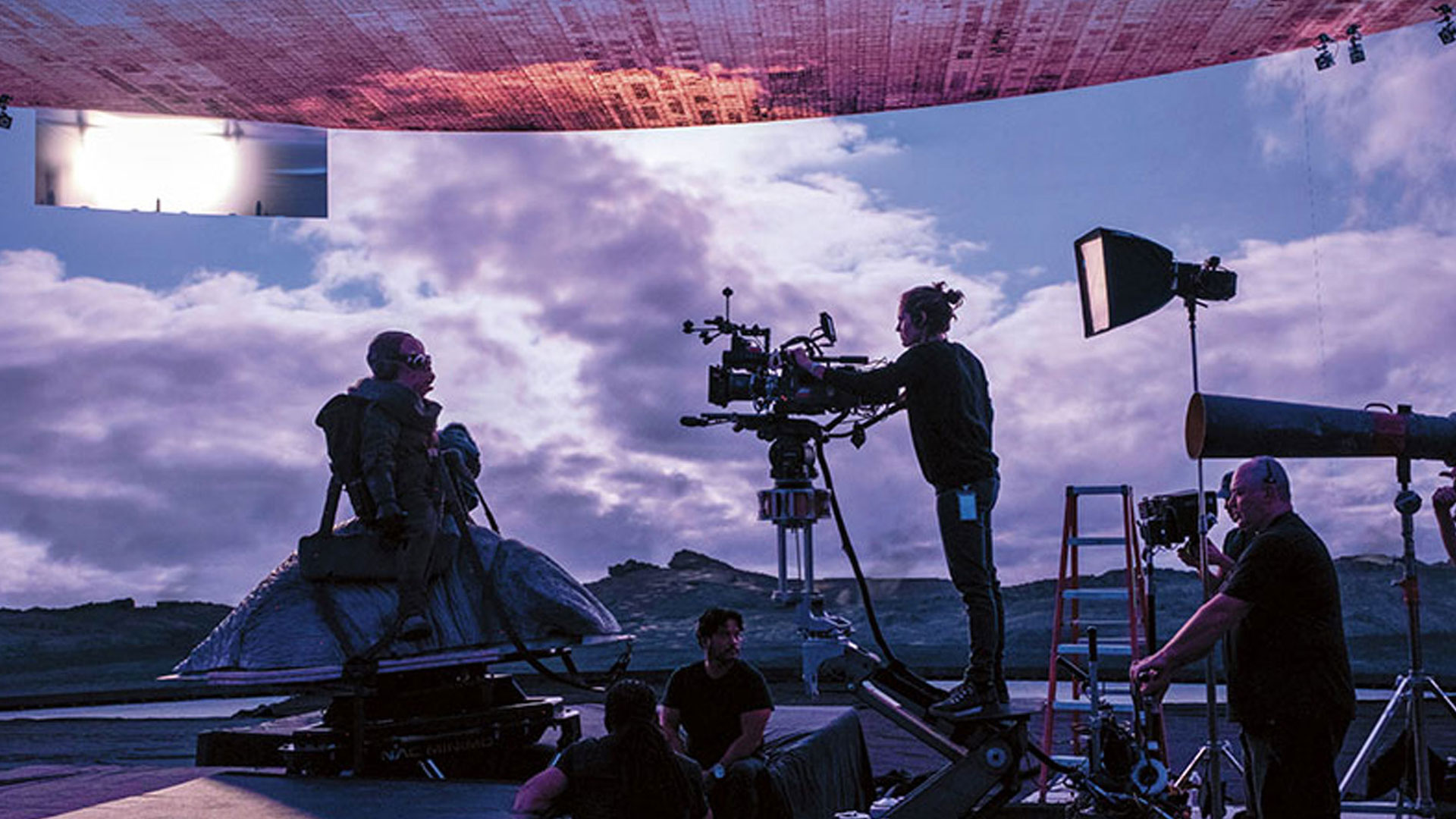
Reduced Post-Production Costs
From a post-production cost perspective, using the LED wall for filming reduced costs associated with special effects and editing. Additionally, filming in the immersive virtual space of the semicircular wall eliminates the need for frequent location changes and outdoor shoots, eliminating concerns about weather and equipment transportation, significantly reducing expenses.
Therefore, the LED wall not only reduced post-production costs for The Mandalorian but also improved production efficiency.
Shooting The Mandalorian: LED Wall vs. Traditional Green Screen
In terms of post-production work, although traditional green screens are cheaper than the LED walls used in The Mandalorian, traditional green screens are composed of green curtains or walls, and require a lot of editing in post-production, thus consuming more time and expensive post-production costs.
From a lighting perspective, LED walls can adjust brightness levels, whereas traditional green screens require constant adjustments to lighting equipment to achieve optimal shooting results. Therefore, LED walls offer superior lighting control and illumination compared to traditional green screens.
From a scene perspective, shooting The Mandalorian with an LED wall only requires projecting pre-prepared seen assets onto the screen to create detailed and realistic environments. Traditional green screen filming requires the construction of more physical sets, so the Mandalorian LED wall makes set construction more efficient and convenient.
Conclusion
As outlined above, the Mandalorian LED wall in The Mandalorian not only enhances production efficiency, provides an immersive experience, and offers brightness adjustment capabilities but also delivers excellent visual effects. For more information on LED displays, please visit HOLA-LED.


